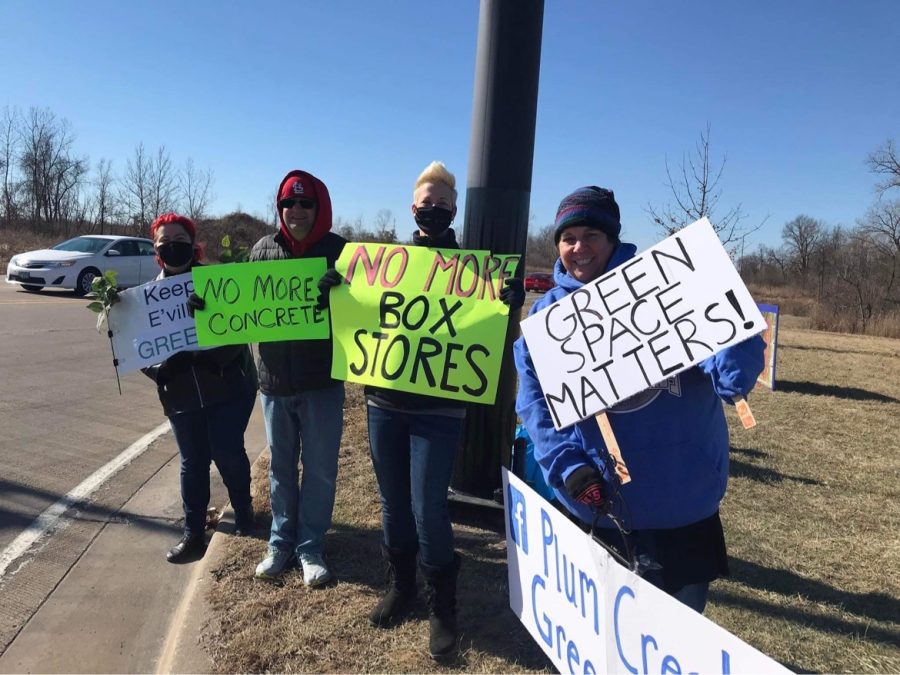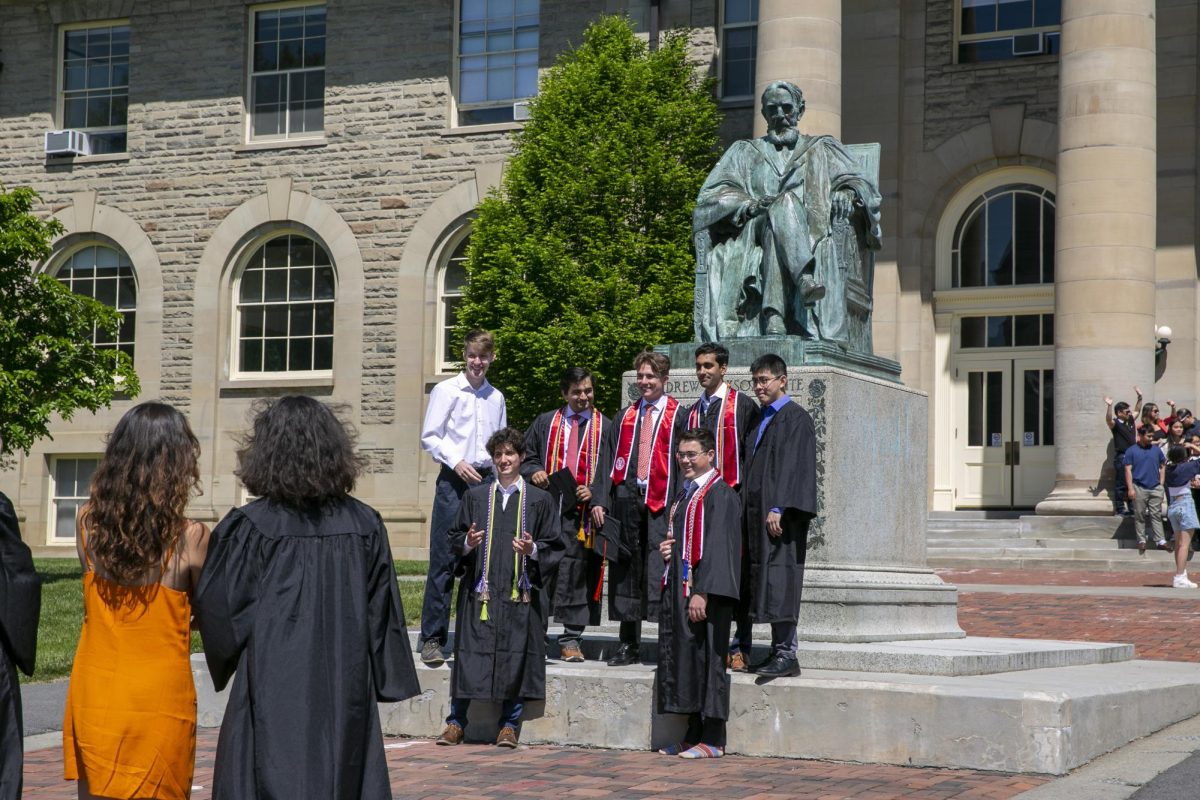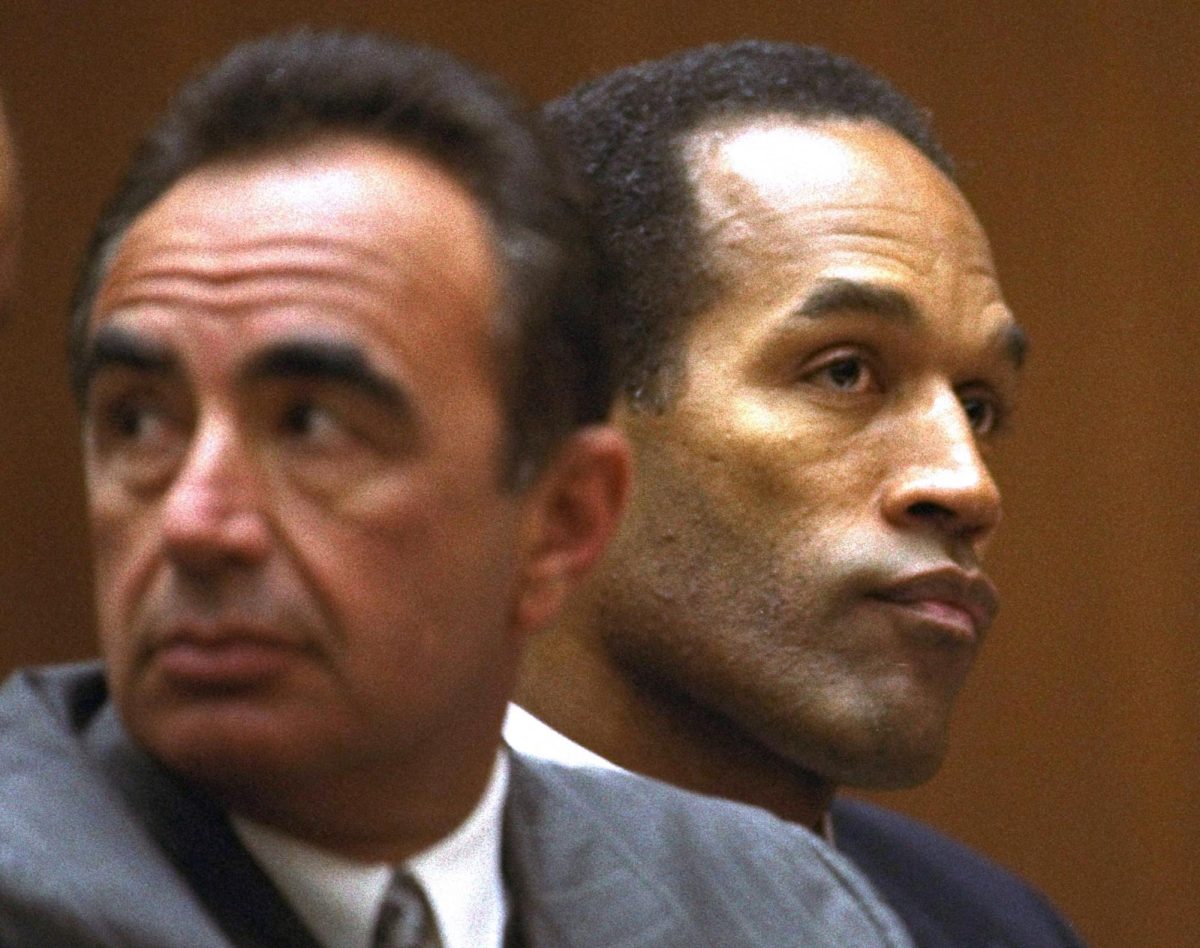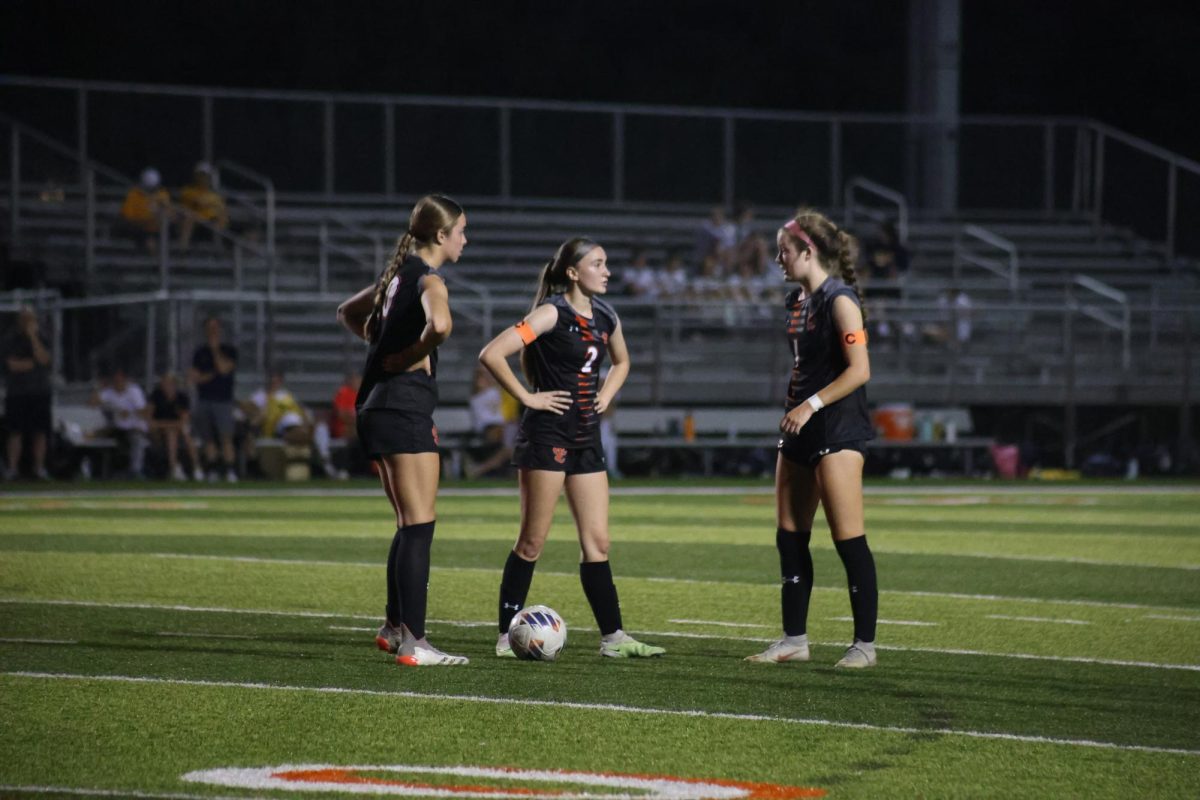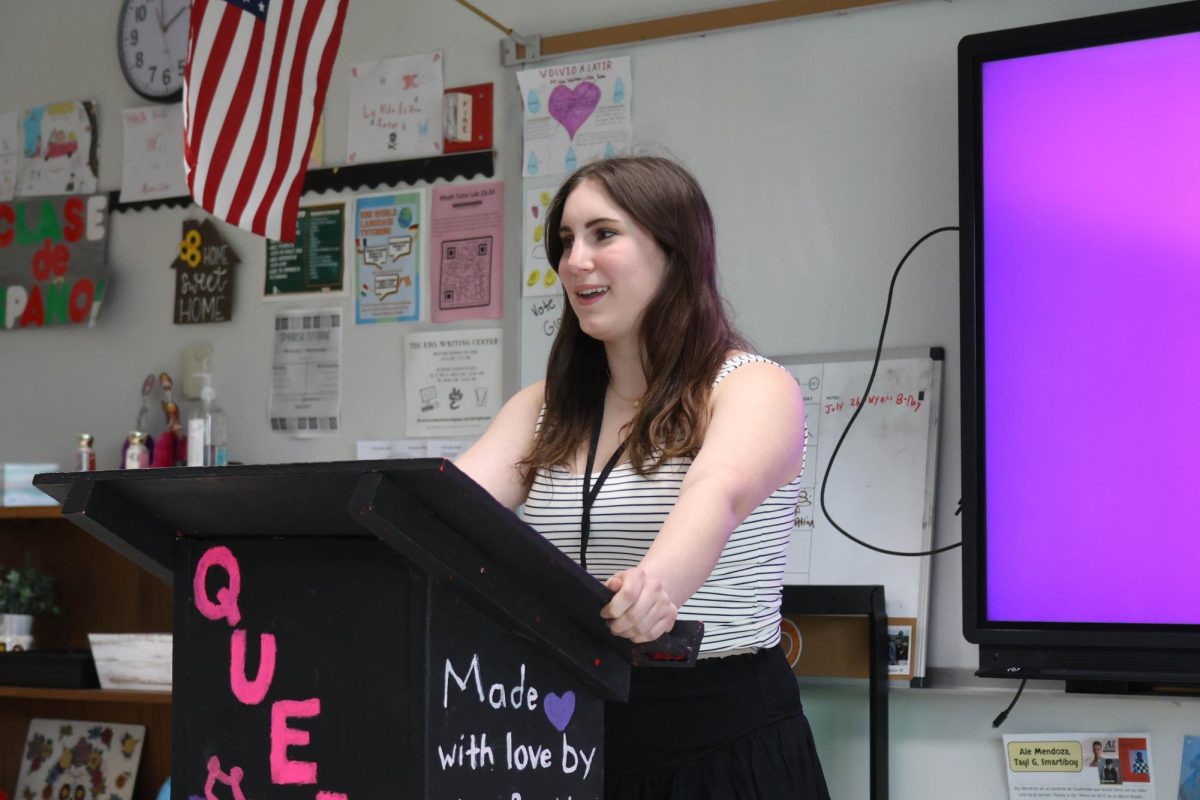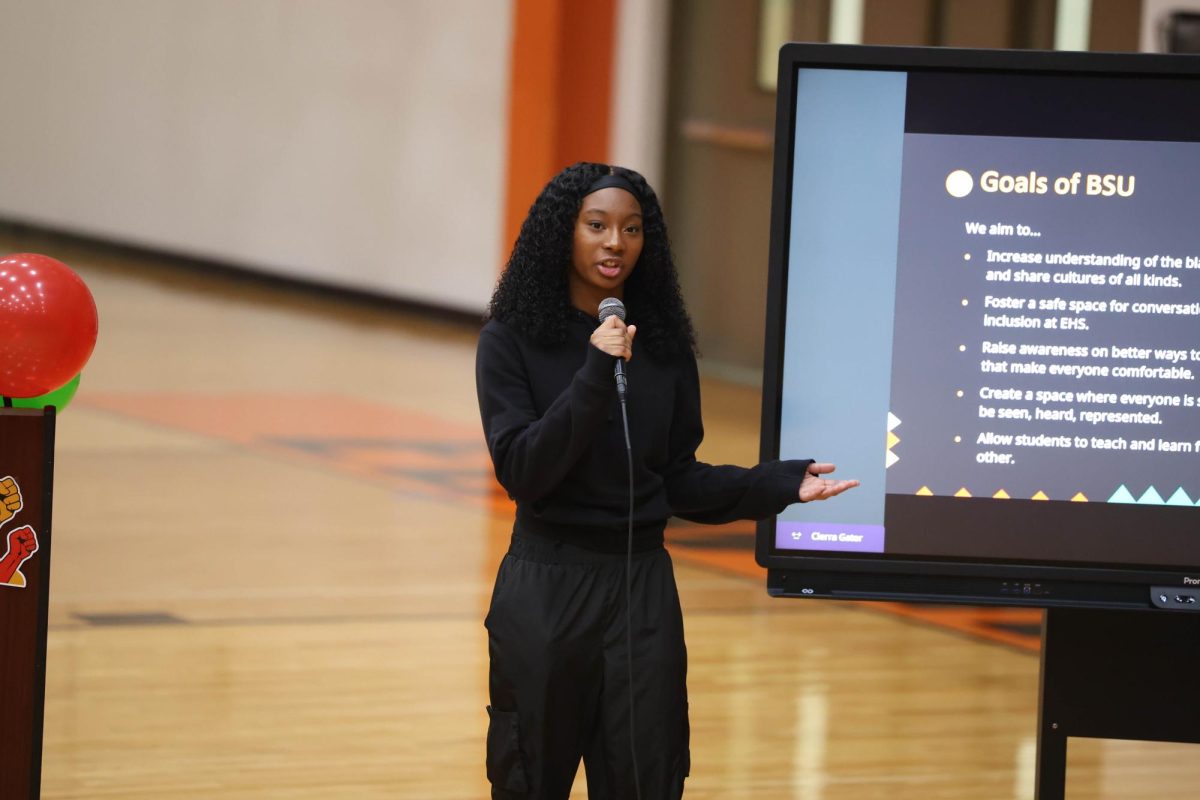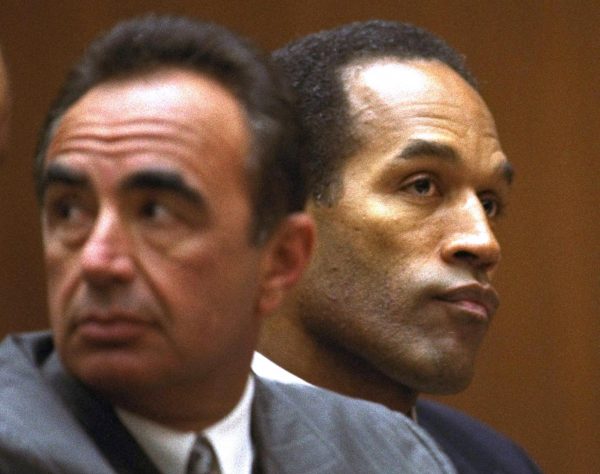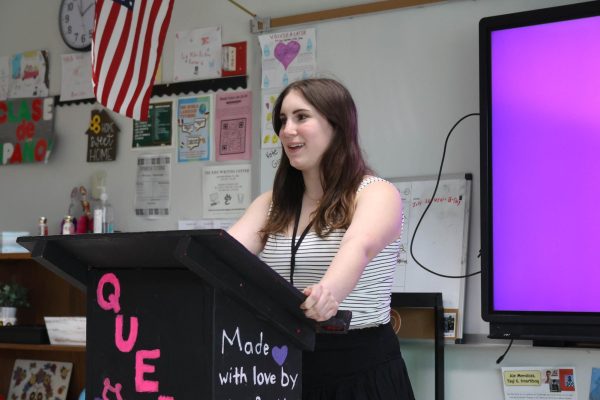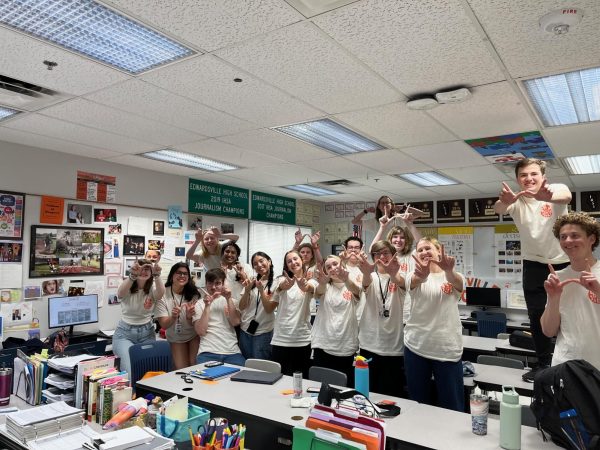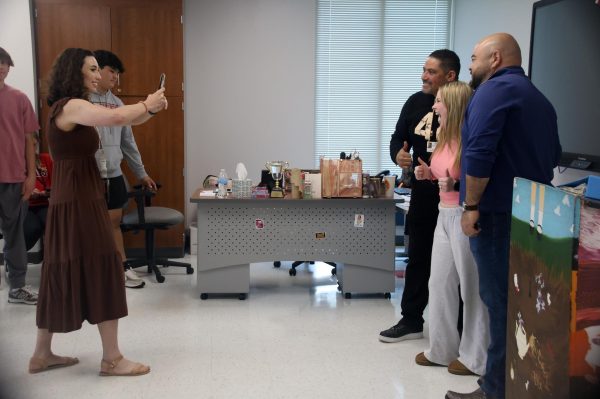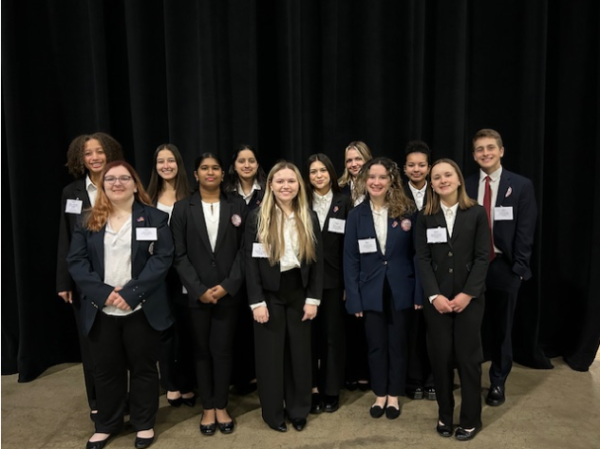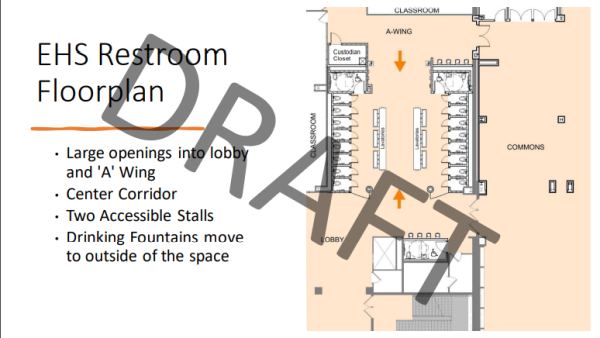Community Members Act to Protect Greenspace
A group of protestors stand at the intersection between Plum Street and Governor’s Parkway behind Ross and Men’s Wearhouse. Protestors are advocating that the land near Plum Street, which is being auctioned off, be used for something other than commercial development.
February 9, 2022
Driving around Edwardsville, you might notice barren swathes of ground that were once filled with trees. Looking from Governor’s Parkway, it’s easy to see the strips of stores lining Troy Road. None of this was visible before.
Developers cleared this area in preparation for new commercial buildings in what will be Orchard Town Center. Menards and Chick-fil-A are set to be built on this land, which previously housed a tree nursery and is under Glen Carbon city limits.
News of another area for development came shortly after the Orchard Town Center was announced.
A 15-acre plot of land off Plum Street is being sold to the highest bidder by the Madison County Board. In response, a group named “Plum Creek Greenspace” formed to protest the commercial development of this land.
Their Facebook page says “This page is intended to gather like-minded citizens, inform, and help collectively communicate with our county board and city officials concerns and desires regarding the sale of the ~15 acres of taxpayer land between Plum Street & Governor’s Parkway.”
The group organized a peaceful protest at the corner of Plum Street and Governor’s Parkway on Jan. 29.
For group member Jay Meyers, the protest was a success.
“We had close to 50 people there, and it was not a comfortable environment because it was windy and it was cold,” Meyers said. “But the support from not only the people who showed up, but also the really encouraging response we got from the traffic passing by … it was really, really good and I was very happy.”
The protest made an impression on senior and YDSA president Joshua Robinson, who wants to work with the group in the future.
“I thought [the protest] was great and I agree with a lot of the points made by the protestors. I hope this grows into a larger movement for sensible development in our community,” Robinson said.
Making an impact on the community and future development projects is the group’s main goal with the protest.
“Realistically, we understand that the property is going to be sold. That is [the board’s] intent and it always has been. And our goal is to raise awareness that another large piece of property is being auctioned off and it will most likely be developed,” Meyers said.
Because the land is public, taxpayer land, the group wants there to be collaboration between the highest bidder and the city of Edwardsville to make the land into something beneficial for everyone.
Sophomore Kate Voss hopes that the land isn’t used for commercial development.
“Especially since the bike trail is by Plum Street, I think it would be cool if there were native prairie plants in that area. It would be a great habitat for the surrounding ecosystems to use,” Voss said.
Disruptions of local ecosystems and water drainage are some of the concerns Meyers raised about commercially developing the area.
Another concern is the increase in traffic the development will cause on these already busy roads.
“It is a headache to drive across town during rush hours. If the city continues to develop, we will have an increase in car accidents, possibly crime and we will continue to lose the small town feel that Edwardsville has always had,” senior Ryan Cross said.
But some students see potential benefits in commercial development.
“I don’t believe there is much we can do or why we would stop the development,” senior Nick McClintock said. “Also, we could see benefits from it later. I believe that if those private companies want to develop there, they probably see economic opportunity, and it’s their money at risk if they fail, so apart from environmental concerns there is nothing to lose.”
Voss says that these economic developments may be unsustainable for Edwardsville.
“Edwardsville might be viewed as just a place to shop or go out to eat rather than an actual place for people to live in if we continue to develop it,” Voss said.
Meyer hopes that people will consider the future generations who will live in Edwardsville when deciding on further development. As a former EHS student, she has witnessed the changes the town has gone through.
“It’s a community issue…” Meyers said, “…and this is something that, especially for people who plan on making Edwardsville their home for years to come, will impact them.”


